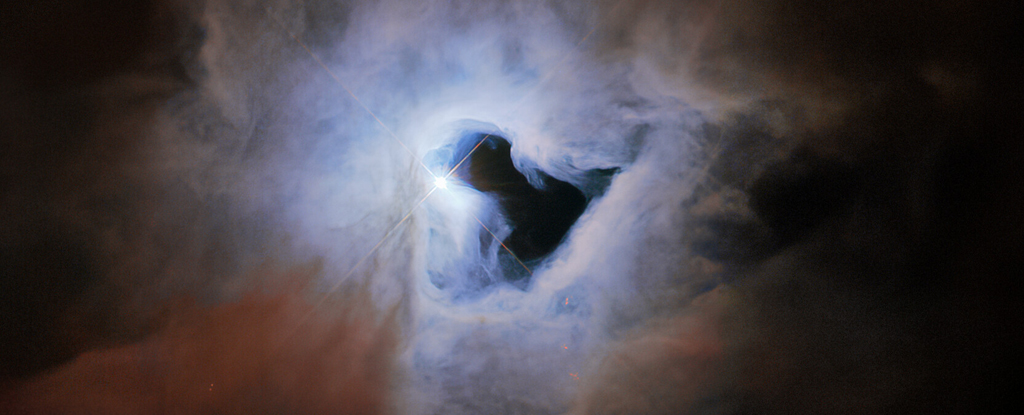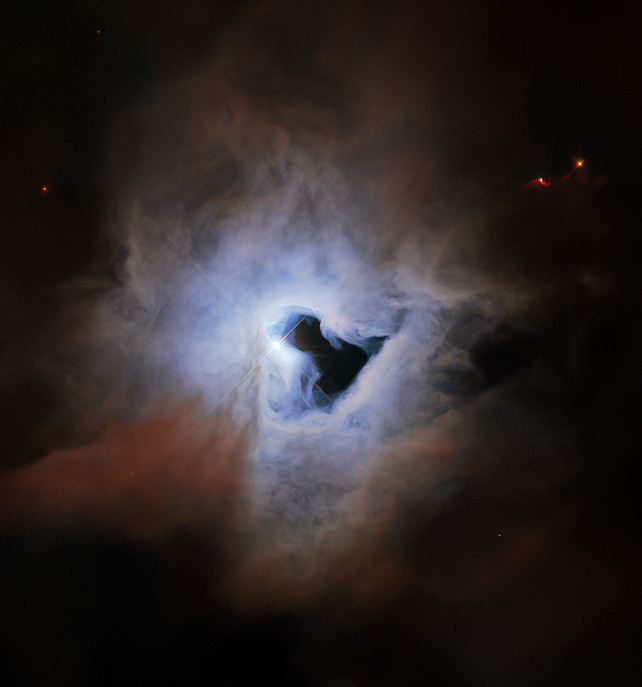Hubble Found an Eerie 'Cosmic Keyhole' Deep in Space And We're in Awe
27 October 2022
ByDAVID NIELD

The NGC 1999 reflection nebula. (ESA/Hubble & NASA, ESO, K. Noll)
When it comes to dramatic and awe-inspiring pictures of space, few can contend with what appears to be a pic of, well, nothing at all: a fascinating image of what seems to be a hole in the fabric of space, taken by the NASA/ESA Hubble Space Telescope.
Described as a "cosmic keyhole" by experts, the phenomenon caught by the telescope is what's known as a reflection nebula – part of the debris left behind by the formation of a newborn star, or in this case, a small, multiple star system known as V380 Orionis in the constellation Orion.
The ghostly celestial object you see here, named NGC 1999, is around 1,350 light-years from our planet; not far from the Orion Nebula – a star factory of significant size that happens to be the closest of its kind to Earth.

(ESA/Hubble & NASA, ESO, K. Noll)
That gap in the middle of the reflection nebula really is an empty part of space, though astronomers initially thought it might be a Bok globule: a dense and cold cloud, made up of gas, molecules, and dust, which appears to block out background light.
More:
https://www.sciencealert.com/hubble-found-an-eerie-cosmic-keyhole-deep-in-space-and-were-in-awe

